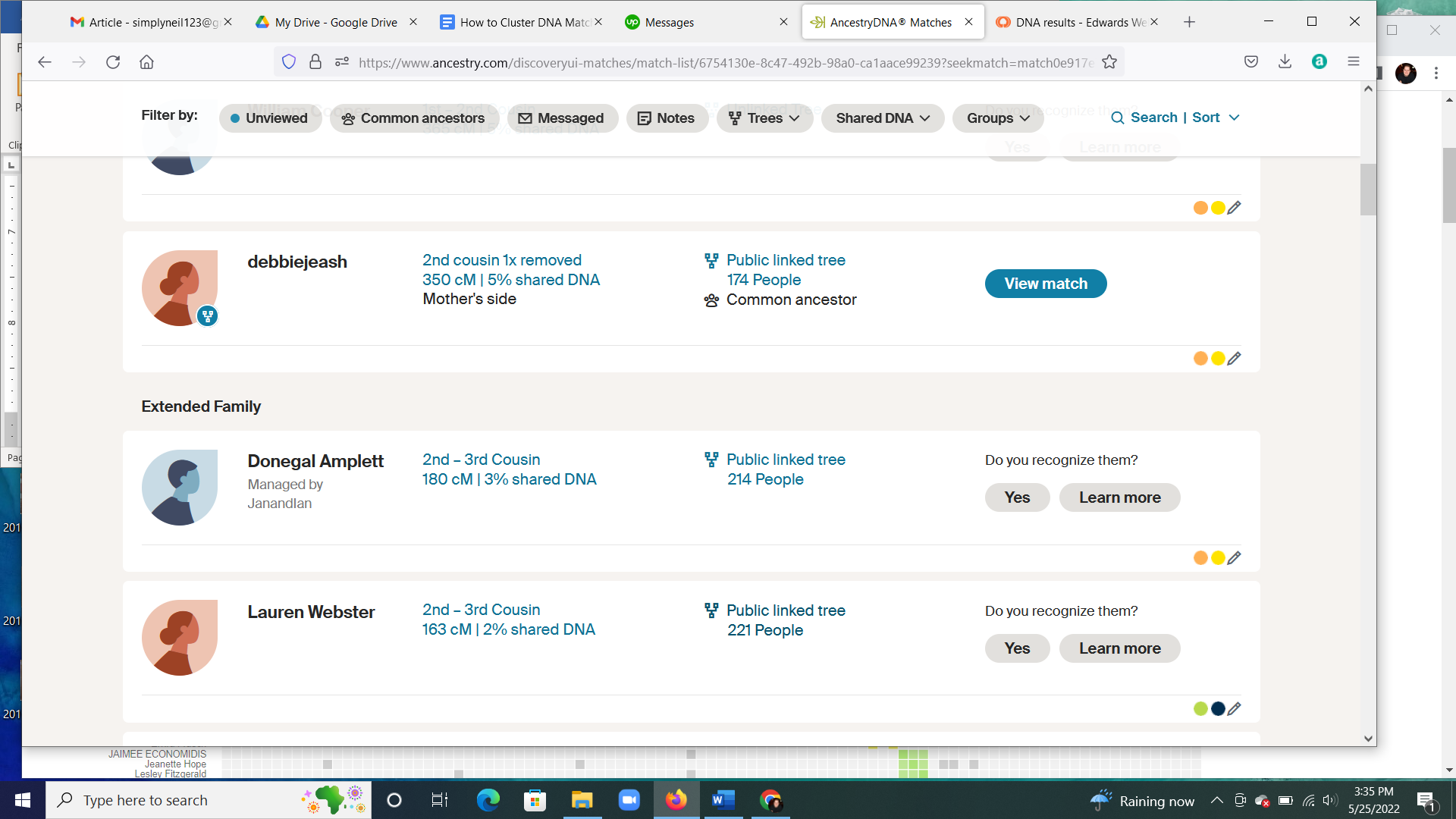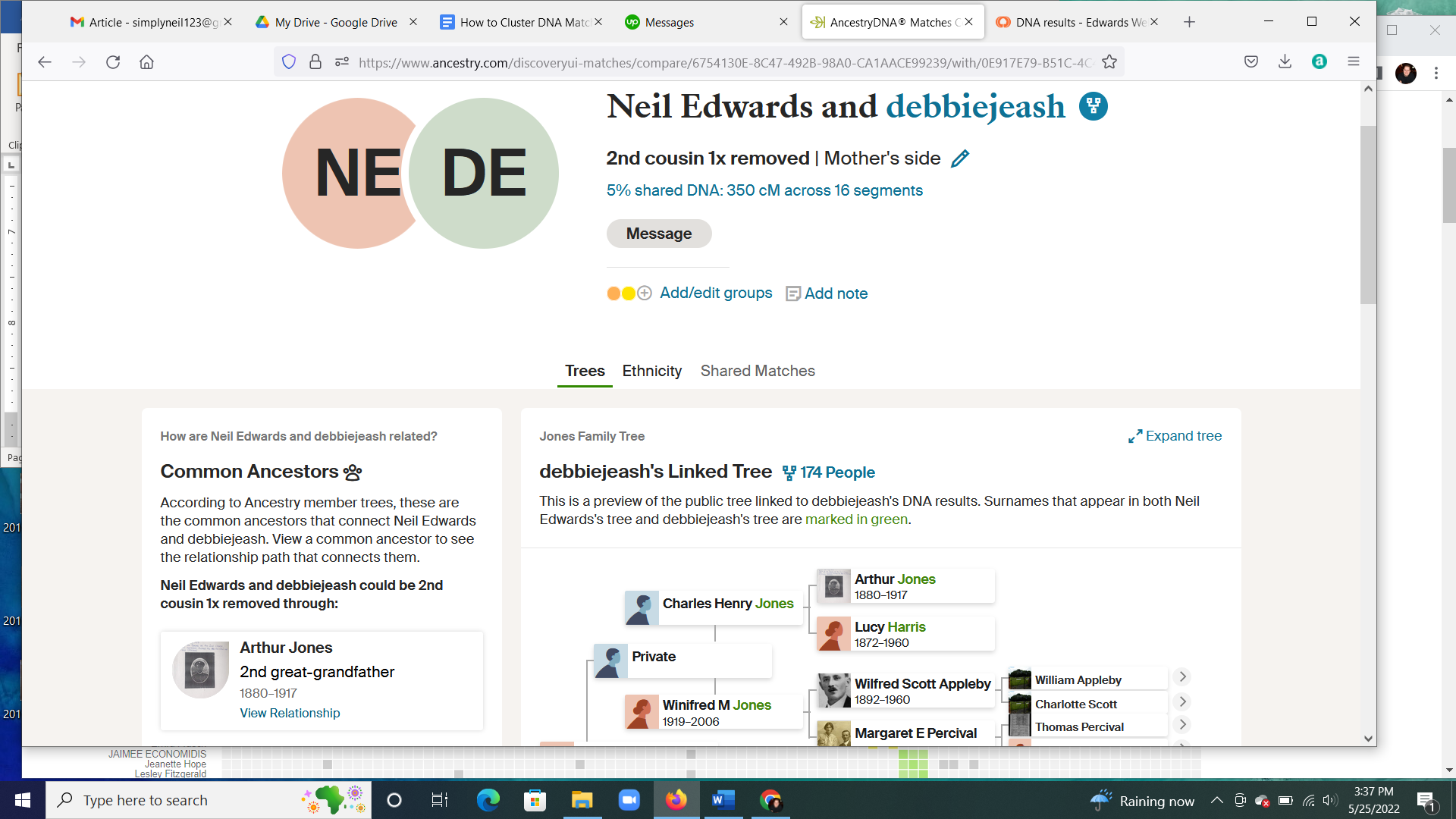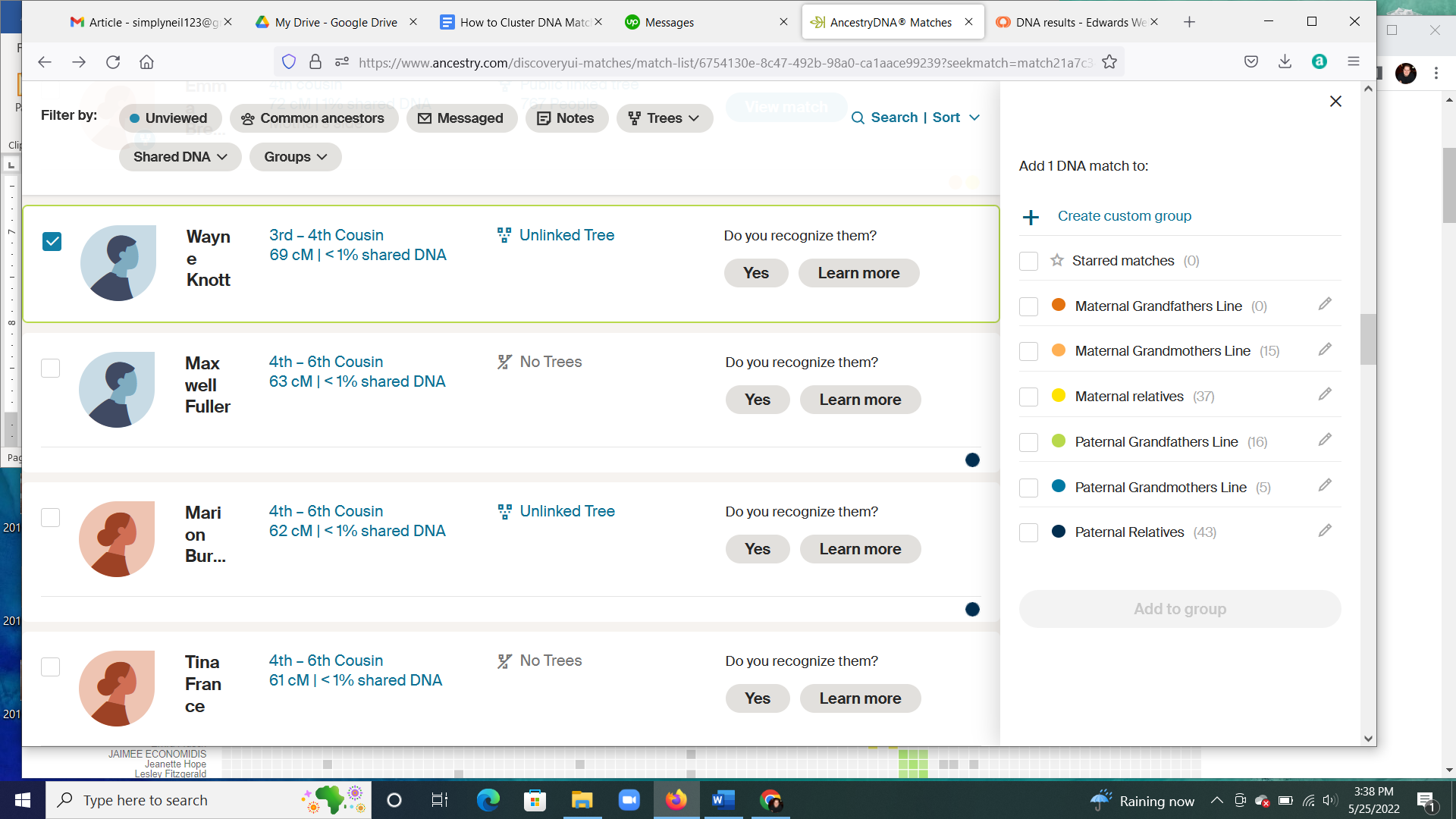How to Cluster DNA Matches on Ancestry
When I go to my AncestryDNA results at present I have 328 4th cousins or closer and 17,681 distant cousins. These are all people that I may share DNA with although I am aware that some of the more distant cousins may not actually be related to me.

Either way there are a lot of cousins in my AncestryDNA list and for the vast majority I do not know how we are related. However since learning about clustering years ago I have made great strides in placing relationships to a decent number of these cousins.
AncestryDNA is Our Top Recommendation
After reviewing all of the top DNA products on the market, nothing comes close to AncestryDNA to help you discover your whole family story!
They give you so much more than any other family tree DNA kit, and let you connect to the places you're from in the world where your family story started, and even help you to discover living relatives you never knew you had!
For the most accurate family history research based on your DNA, sign up for AncestryDNA now!
Get AncestryDNA →In this post we are going to take a look at clustering, what it is, how it works and what we can learn from it. The DNA test is more than an ethnicity estimator; it can also help us find distant cousins some of whom might even live down the street from you.
Why You Should Cluster Your Cousin Matches
When you look at your DNA matches list on AncestryDNA you essentially have a list of names of people with whom you share DNA. You may recognize some of them as they may be family you grew up with. The majority of them however are complete strangers.
We could go through each match to see if they have a tree and try to determine how we are related to these matches but this will take time. But if we do a little prep work we can make our research more efficient and run more smoothly.
Clustering is a practice which can help us greatly as this allows us to group our matches into collections of cousins who likely are not only related to us but also to one another. This means that we all might share a common ancestor.
Some of these cousins may have discovered who that ancestor is while others may not even have a tree attached to their DNA test. If they are grouped together however this allows those who have found tracing their families easier to essentially help those who may be having difficulty.
I know for my own part that the work done by a 4th cousin of mine helped me greatly in researching my father's side of the family with whom I have no contact. It was through clustering I was able to determine that this cousin was from my paternal side and she had first hand knowledge of our shared ancestor as she was in her 70s and actually met them.
How to Cluster Your DNA Matches
When you set to clustering your matches make sure to give yourself some time and perhaps a good strong pot of coffee. This is not a glamorous task but the results are rewarding. The basic intent with clustering is to first sort your matches into groups and then start researching their family trees in search of your common ancestors.
- Start with your closest cousin match on AncestryDNA, you may already know your familial relationship to them
- Identify all of the shared cousin matches you have with this person
- Assign these cousins to a custom group (this is best done with color coding and by giving them a name, for example "paternal cousins")
- For each member of this custom group find all of the shared matches you have with them as individuals and add them to the group
- Once you have completed this step one time move to the next closest cousin who has not been assigned a group and start the process again
- Aim to assign 30-50 DNA matches to groups to start with, once this is done you can start researching for potential shared ancestors
How Do You Find Shared Matches?
Shared matches are obviously vital for this process so let's make sure you know how to find them. When you are at your DNA matches list which displays your cousins click on the name of the cousin you want to find shared matches with.
This takes you to a page that offers features to help compare yourself to them. Just above their family tree information are three sections in a toolbar: Trees, Ethnicity and Shared Matches. Simply by clicking on shared matches you will be taken to a list of people that both you and the chosen cousin are likely related to.

At this point it should be noted that sometimes we can share DNA with two people who themselves share DNA but this may not all come from the same source. We may be related to one through our father and the other through our mother. They might be related through someone totally unrelated to you.
The reason I mention this is because from time to time you might find someone who connects to one person on one side of your tree but multiple people on the other. That connection to one person might be just between them and not indicate a common ancestor on that side of your family.
How to Assign Custom Groups
As mentioned the best way to track your cluster results is to create custom groups. Ancestry allows you to attach colored tags to your matches and you can attach a descriptive name to that color. I for example have tags that indicate which of my grandparents the matches are likely attached to.
I have three of these groups as there is some question regarding my maternal grandfather so as of yet I can find no matches that seem to connect to his line. Using clustering I am hoping eventually to locate a close cousin who does not show a connection to any of my three known grandparents.

If I can discover a 2nd or 3rd cousin who does not match any of my known grandparents it is likely this individual is related to my maternal grandfather and may prove the key to finally putting that mystery to bed.
Finding an Unknown Ancestor
One of the key reasons for clustering our matches is to try and determine a shared ancestor between us and our unknown cousins. The aim is to find matches in the cluster who have attached their DNA results to a decently fleshed out family tree.
Ideally if several matches in a cluster have trees then you are looking for surnames and individuals that appear in multiple trees. Knowing that you likely have an ancestor that is already identified in the trees of your cousin matches makes it easier for you to seek your own connection to that person.
In perfect genealogy we would just go back generation by generation, however sometimes we have to try and find a missing link or two. Knowing that a certain person is likely a common ancestor allows you to look more closely at them and their children.
It may take researching several lines in reverse to determine where the connection to your family is made. There is always the possibility that the connection comes in the form of misattributed parentage. As such you might never find official confirmation of the link.
Another tip is if your matches only have small trees you could always try and flesh them out yourself in search of your common ancestors. I have certainly done this myself and have found the answers I needed. If you do this I would suggest you keep the tree you make private. Sometimes people get territorial regarding their family and we are not out there to upset others, only to learn about our own family tree.
Conclusion
Clustering is not a difficult process although it is time consuming and not glamorous. However, the results can help you make major family tree breakthroughs and explain your relationships with some of your DNA matches.
If like me you are looking to crack a family mystery and you have plenty of DNA matches give clustering a try. You might be pleasantly surprised at what you learn from putting in the effort.
Link To or Reference This Page
We spent a lot of time downloading, cleaning, merging, and formatting the data that is shown on the site.
If you found the data or information on this page useful in your research, please use the tool below to properly cite or reference Name Census as the source. We appreciate your support!
-
<a href="https://namecensus.com/blog/how-to-cluster-dna-matches-on-ancestry/">How to Cluster DNA Matches on Ancestry</a>
-
"How to Cluster DNA Matches on Ancestry". NameCensus.com. Accessed on April 19, 2024. https://namecensus.com/blog/how-to-cluster-dna-matches-on-ancestry/.
-
"How to Cluster DNA Matches on Ancestry". NameCensus.com, https://namecensus.com/blog/how-to-cluster-dna-matches-on-ancestry/. Accessed 19 April, 2024
-
How to Cluster DNA Matches on Ancestry. NameCensus.com. Retrieved from https://namecensus.com/blog/how-to-cluster-dna-matches-on-ancestry/.
